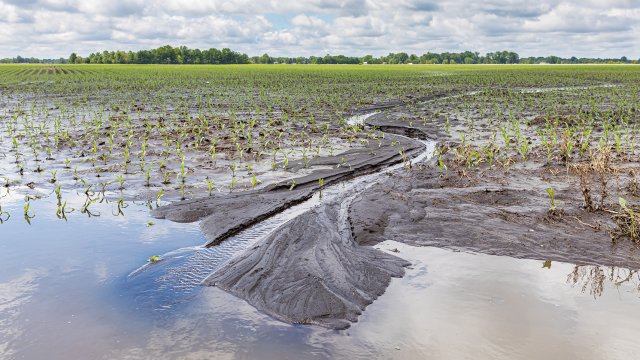
Advancing a carbon tax for more than a decade, from rotary club meetings to college classrooms and myriad conferences in between, I thought I’d heard every question possible related to the revenue-neutral, border-adjustable fee on carbon pollution most economists agree would help solve the climate crisis.
But on a recent trip to Idaho, I got asked a new question.
In Moscow (ours, not theirs) presenting to students and faculty at the University of Idaho, an ag-economics master’s degree student whose family has been growing wheat for generations asked me what the impacts of a carbon tax would be on the agricultural sector. The climate challenge, he noted, while emphasizing his conservative roots, is worth figuring out but must be done so in a way that spares farmers significant hikes in the price of petrochemicals would come from a carbon tax.
And he’s right. This is a challenge we need to figure out.
Farmers are the lifeblood of our nation. They are also quite savvy when it comes to climate trends and understand the weather second only to meteorologists. In a profession where one late frost or unanticipated heat wave can have devastating consequences, you grow to understand trends. Farmers get all too well that a changing climate threatens their crop yields, their water supply, and in some cases, scarily puts them and their lands in the path of out of control wildfires. Climate change poses a significant threat to the entire U.S. economy, to the tune of $14.5 trillion by 2070, which isn’t as far off as it may sound, especially to generational farmers.
They feed the world; the least we can do is help them in the transition to a clean energy economy.
Some carbon tax/fee proposals, like the Carbon Dividend Plan, exempt farm-used fuels from the carbon tax. There is also a burgeoning interest in sustainable practices such as no-till farming, crop rotation, agrivoltaics, and other sustainability policy is likely to be at the center of the next Farm Bill. Is any of this enough to assuage the fears of a sector of the economy is already looking potential doom in the mouth? No. But the beauty of a revenue-neutral, border-adjustable carbon tax is by putting a price on carbon, we spark innovation. And the beauty about innovation is we are only limited by the vast imaginations of the most creative and technologically curious minds.
According to NASA, by the year 2030, corn production could be down as much as 30 percent, while wheat yields could grow 17 percent. Bad news for the corn farmer, but good news for the wheat farmer we encountered in Idaho. Yet, understanding the values form the bedrock of so many farmers, I imagine that statistic doesn’t give him any relief. A climate solution needs to take into account the pressing danger posed to this vital sector of the economy in its entirety, not crop-by-crop, while also not crippling that sector in the process with burdensome fuel price increases.
I learned one lesson in Moscow, Idaho: farmers are critical to have at the climate table. After all, they’re the ones making the dinner possible.
This op-ed by Bob Inglis was first published at Forbes.com on November 30, 2023.
